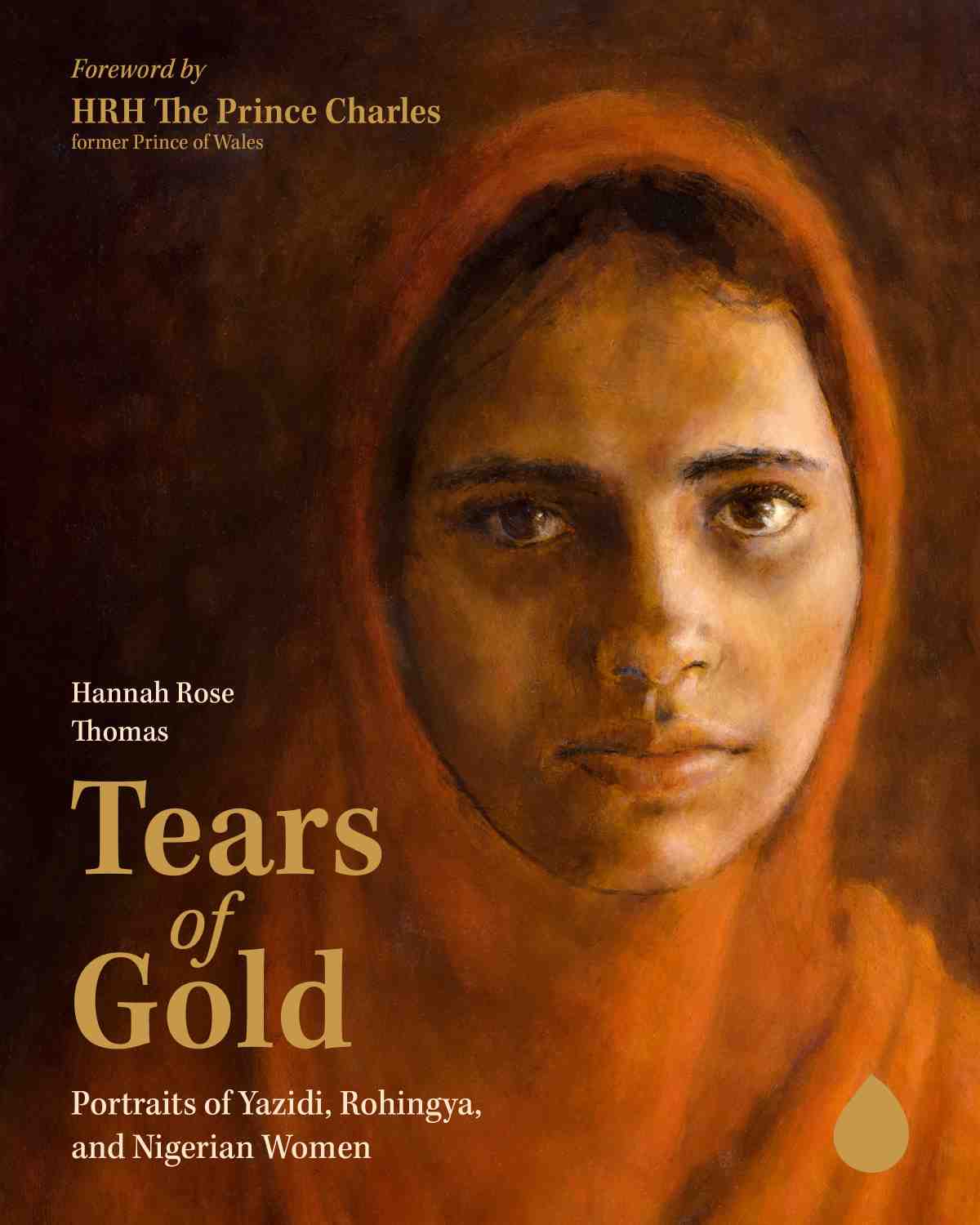A testimony to our shared humanity: Baroness Lister reviews 'Tears of Gold'
Left: 2017, Barfe’s seven-year-old Yazidi son was taken by Daesh; Right: 2018, Nigerian Christiana was eight months pregnant when she was attacked by Fulani herdsmen | Images courtesy of Hannah Rose Thomas
3 min read
Featuring moving and beautiful portraits of female survivors of conflict and sexual violence, Hannah Rose Thomas’ art imparts dignity, resistance and justice to her subjects
It has been a privilege to review this beautiful, moving book that has been produced with the care it deserves.
Through a series of portraits of female survivors of conflict, slavery and sexual violence, artist Hannah Rose Thomas has attempted “in a small way to rehumanise” the women she met. Not least, these portraits of women who have endured dehumanising experiences remind us that (in the words of anti-poverty campaigner Joseph Wresinski) human rights are about “the right to be human”. By treating the women “as subjects in their own stories rather than as objects in the stories of others”, they become testimony to our shared humanity.
The book’s introduction explains how the portraits emerged from art workshops in Iraqi, Kurdistan, and Bangladeshi refugee camps and in northern Nigeria as well as more recent encounters with Afghan, Ukrainian, Uyghur and Palestinian survivors of violence.
Thomas’ portraits are an attempt in 'a small way to rehumanise' the women she met
Divided into four sections, each of the book’s portraits are accompanied by some words providing context from the subject of the painting plus a short explanation of their situation. In the case of the Yazidi and Nigerian women there is also a small self-portrait, which allowed the women to communicate not only the “unspeakable pain” they had suffered but also their resilience.
The introduction’s title “The Art of Attention” takes its inspiration from the philosopher Simone Weil; attention is about recognition and respect of the other. Through her portraits, Thomas aims to give that recognition – of both the trauma experienced by the women and also of their dignity and resistance. In doing so, she argues that attention is “ultimately a form of justice”.
 In a number of places Thomas considers the ability of the arts to “pave a way for healing by creating space for dialogue, remembering, lament and imagining a more peaceful, just, and equal future”, a theme developed in an afterword by Christopher Bailey of the World Health Organization.
In a number of places Thomas considers the ability of the arts to “pave a way for healing by creating space for dialogue, remembering, lament and imagining a more peaceful, just, and equal future”, a theme developed in an afterword by Christopher Bailey of the World Health Organization.
Given that the central “thread of intention” of her projects has been “the restoration of these women’s voices”, I did wonder why she did not use more of the words of the women themselves in the commentary that accompanies the portraits describing the women’s situation.
But perhaps the answer lies in the experience of Zainab, a young Palestinian woman who lost 22 family members in an air strike on Gaza in 2021. Processing her grief through painting, she told Thomas that she used the universal language of art to convey her voice and feelings for others to understand the grief she “carries each and every day” in the “scattered rubble from my heart”.
Baroness Lister of Burtersett is a Labour peer
Tears of Gold: Portraits of Yazidi, Rohingya, and Nigerian Women
By: Hannah Rose Thomas
Publisher: Plough Publishing House
